If you suspect that your workplace is toxic, it’s essential to arm yourself with the knowledge to recognize the signs and take the necessary steps to address the issue.
Continue reading to learn about the signs of toxicity in a work environment and the resources available to create positive change. Your professional well-being is paramount, and you deserve a workplace that fosters personal and career growth, recognition, and success.

Is My Ultrasound Department Toxic?
To determine if your ultrasound department is toxic for you, consider these questions:
💪Confidence: Do you feel confident in your abilities and work output? Is your work environment supportive of your professional growth and development?
🥰Relationship with colleagues: Do you get along well with your colleagues? Are there any conflicts or issues that are affecting your work performance?
🤝Teamwork: How well do you work with others in your team? Is your team environment supportive and collaborative?
😄Well-being: Are you happy and satisfied with your work? Is your work-life balance healthy? Do you feel stressed or burnt out?
🏥Health: Is your physical and mental health being affected by your work environment? Are there any health and safety issues that need to be addressed?
Reflecting on these areas can help you determine if your ultrasound department is a thriving ground for your skills or if it’s time to consider finding a healthier and more supportive professional landscape.
Sometimes, we don’t trust our guts and need a little more proof that we’re not overreacting. Let’s take a look at other ways to identify toxicity in the workplace that are more objective.
Identifying Toxicity in the Sonography Workplace
Toxic workplaces can have a range of negative effects on employees, from burnout to mental and physical health problems. So, what exactly makes a workplace toxic? Let’s explore the five dimensions of a toxic workplace that Liane Davey identifies in her article on workplace toxicity and how they apply to the ultrasound department.

1. Toxic Policies
As ultrasound techs, our well-being is intricately tied to the rules that govern our work environment. This means the “rules” that have been in place forever might lead to a toxic environment. Identifying toxic policies or processes is crucial, and here are some indicators specific to ultrasound departments:
- Working conditions that don’t allow you to do your job effectively & safely (no ergonomic support or equipment, poor temperature control, lack of space to maneuver patients, beds, machines, & assistive devices, lack of privacy)
- Scheduling policies that don’t allow for adequate breaks or allow an employee to accommodate their needs (like days off, time for appointments)
- Hiring practices, performance reviews, or promotion procedures that are discriminatory
- Benefits packages and compensation that don’t account for the expertise, skills, and physical demands a sonographer must meet or don’t provide a livable wage
If any of these sound familiar, consider getting out. It might be the healthiest choice for you.
2. Toxic Practices
The culture or the way an ultrasound department runs, with all of its unspoken rules and norms, can be toxic too.
Recognizing toxic cultural patterns specific to ultrasound technologists is essential:
- Poor treatment of new sonographers or new hires
- Resistance to hearing new ideas
- Gossiping, sarcasm, or undermining
- Secretive ways to influence decisions in the department
- Relentless positivity and refusal to address dissent or disagreements within the ultrasound team
Ask yourself: Do the unspoken rules within the ultrasound department condone exclusionary, unproductive, or demoralizing behavior? You likely work in a toxic environment.


3. Toxic Management
Sometimes the toxicity in the workplace comes down to one person, a person who is in a position of power. The control they have can make the work environment unbearable.
Indicators of a toxic supervisor for sonographers include:
- Consistently pushing for an unmanageable workload or productivity numbers
- Unwelcomed feedback that is overly critical, mean, or demoralizing
- Inconsistent treatment of staff
- Failure to plan and lead the department to avoid constant “emergencies” that result in extra work or stress
- Unaware of the role of a sonographer, but still micromanages and questions
Not every manager is toxic, but their behavior can really affect the departments they manage.
4. THAT Coworker
The one person who might be dragging everyone down could very well be another ultrasound tech too. The time we spend at work and our happiness there can have a lot to do with our teammates.
Indications of toxic colleagues for sonographers include:
- Not following through or keeping their commitments
- Socially excluding coworkers
- Gossiping with others or management
- Dishes out disrespectful, snide, derisive comments
- Behaves as the department hero, dismissing the rest of the teams’ contributions to a successful day
If these behaviors are present in your sonography team, they can hinder your success and affect your health and happiness. If you find yourself surrounded by toxic coworkers, explore the options below for potential solutions.


5. Toxic Patients (Customers)
In the healthcare industry, the patient’s behavior can often complicate the health of the workplace. Sonographers are passionate about caring for those in their care, but being sick or in pain can bring out the worst in our patients. Unfortunately, this behavior can create a toxic work environment for the ultrasound staff.
Patients do several things that can cause a toxic work environment:
- Abusive behavior, including yelling, unwanted physical contact, and aggressiveness
- Violation of rules and attempts to bypass organizational policies
- Unrealistic expectations and constant threats to seek medical services elsewhere
- Nitpicking every single aspect of care or falsifying interactions with other medical professionals
This might connect back to toxic policies if there are no workplace protections to address poor patient behavior.
Navigating a Toxic Sonography Workplace
Determine what the sources of toxicity are.
- After looking through the first part, you probably have a good idea of where the toxicity is coming from. Understanding the root causes will help you address them more effectively.
Set Boundaries with the source.
- Establish clear boundaries to protect your mental and emotional health. Define what behaviors are unacceptable, and communicate assertively if you feel those boundaries are being crossed. This can help create a healthier dynamic in your interactions.
Seek External Support.
- Connect with trusted colleagues, friends, or family members to share your experiences. Talking about your challenges can provide emotional support and different perspectives. Sometimes, others may have faced similar situations and can offer valuable advice. Remember that HR and other employees might not be the best support channels.
Document, Document, Document.
- Keep a record of specific incidents that contribute to the toxic environment. Document dates, details, and the individuals involved. Having a documented record can be useful if you need to escalate the issue to higher authorities.
Communicate Professionally With Internal Players.
If you feel comfortable, address your concerns with relevant parties in a professional manner. Whether it’s a colleague, supervisor, or HR, clearly articulate your issues and propose constructive solutions. Open communication is key to resolving workplace challenges.
Explore Internal Resources.
Investigate if your workplace has resources or programs to address workplace issues. Some organizations offer counseling services, conflict resolution programs, or avenues to report concerns anonymously. Utilize these resources to seek assistance.
Know Your Rights.
Familiarize yourself with your rights as an employee. Understand the policies in place to protect you from harassment or discrimination. If the toxic environment violates your rights, consult a human resources professional or seek legal advice.
Professional Development.
- Invest in your professional growth and development. Consider attending workshops and conferences or pursuing additional training to enhance your skills. Focusing on your career goals can provide a positive outlook and potentially open doors to new opportunities.
Evaluate Long-Term Options.
- Assess your long-term goals and whether the toxic environment aligns with them. If the situation doesn’t improve and significantly impacts your well-being, explore the possibility of seeking employment in a healthier work environment.
Remember, your well-being is paramount, and taking proactive steps can contribute to creating a more positive and supportive atmosphere in your sonography workplace.
Considering Exit Strategies
If quitting seems inevitable, ensure you’re financially prepared, explore new positions, and leave on good terms. Alternatively, consider transferring within your organization or exploring diverse roles in healthcare.


Embracing a Positive Sonography Journey
Sonographers deserve a healthy and supportive work environment. Reflect on core issues, explore overlooked solutions, and take action for a better work environment. If necessary, seek a workplace aligned with your values, featuring an exceptional team, supportive leadership, and a role that matches your skills and aspirations.
Your well-being is paramount; you deserve to contribute to the sonography world in a positive and supportive environment. If upskilling is on your agenda, explore our webinars and CMEs to enhance your ultrasound knowledge. Learning a new skill can improve job satisfaction.
Remember, your happiness matters, and a positive workplace awaits your invaluable contributions to the field of sonography.
More About Toxic Positivity
Toxic positivity is a mindset that prioritizes relentless optimism at the expense of the authentic human experience. It tends to oversimplify complex emotions and dismisses struggles as minor inconveniences that can be overcome with positive thinking. This approach invalidates individuals’ real challenges and puts immense pressure on them to conform to an unrealistic standard of eternal happiness.
In the realm of toxic positivity, expressing sadness, anger, or frustration becomes taboo. The emphasis on maintaining a facade of perpetual positivity can lead to suppressed emotions, creating a breeding ground for internal conflicts and a lack of genuine connection with others.
Fixing a toxic environment is nearly impossible when toxic positivity prevails in the workplace culture. It can also be difficult to identify if toxic positivity is actually happening or if it is how you’re interpreting the “positive” actions of others. This self-doubt can bring up a lot of conflicting emotions.
Keep reading to see what good positivity looks like.

What Good Positivity Looks Like
True positivity doesn’t deny the existence of challenges or struggles; instead, it acknowledges them and chooses to approach them with resilience and optimism. Here’s what genuine positivity entails:
😓 Acknowledging Emotions
Good positivity starts with recognizing and accepting the full spectrum of human emotions. It’s okay to feel sad, angry, or overwhelmed. Embracing these emotions rather than suppressing them is crucial to genuine well-being.
💓 Cultivating Resilience
Positive thinking, when rooted in reality, becomes a powerful tool for building resilience. It’s about facing challenges head-on, learning from setbacks, and adapting with a constructive mindset. Resilience is not about ignoring difficulties but navigating through them with strength and determination.
🤗 Encouraging Authentic Connections
Authentic relationships are built on openness and understanding. Good positivity involves creating a space where individuals feel comfortable expressing their true selves, vulnerabilities, and all. When people can share both their triumphs and struggles, connections deepen, fostering a sense of community.
🤩 Practicing Gratitude
A positive mindset can be nurtured through gratitude. Taking time to appreciate the positive aspects of life, no matter how small, can profoundly impact mental well-being. Gratitude is not about denying challenges but acknowledging the good amidst them.
Striking the Right Balance
The key is to strike a balance between acknowledging reality and maintaining a positive outlook. Good positivity is about embracing life in all its complexities and understanding that challenges are a natural part of the journey. It encourages growth, resilience, and the development of a mindset that can thrive amidst both joys and sorrows.
As we navigate the intricate dance between optimism and authenticity, let’s strive for a positivity that uplifts, inspires, and empowers us to face life’s uncertainties with courage and grace.



